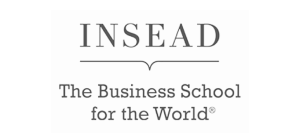Several startups don’t understand how their products align with their market. As a result, several start-ups don’t venture beyond the initial idea. Knowing your market and building a product that fulfils their needs is super important. Although founders may have a unique product, the users they are marketing to may not be interested in what they offer.
Zoom in on Marc Andreessen’s take on things. Andreessen, a lucrative venture capitalist, coined the term ‘product-market fit’ (PMF), this term relates to the concept that a product should satisfy a specific market need.
Andreessen harped on the fact that products should enhance and improve users’ lives and experiences – not take away from them. And, for this reason, if you follow this concept, your start-up is more likely to succeed by matching your users’ needs and wants with what your product offers.
We asked Doug Haines, Managing Director at Kalium, a content marketing agency, to give his views on the subject. Haines maintains that one of the challenging aspects is finding the best market fit for your product – and he assures us that this can be resolved with some digging and innovative research techniques.
Doug elaborates, “From a marketing perspective, many businesses aren’t brave enough to decide who their buyer is. They’re too broad because they don’t want to exclude more customers – and what that does is elongates the sales cycle because customers are not sure if they are the right fit for the product.”
Why is product-market fit essential in regard to achieving start-up success?
To build a solid foundation, conduct research. It’s the only way to establish direction. Aiming in the dark has never had a positive outcome. So you start with understanding your users’ dislikes, pain points, etc.!
“When businesses cannot clearly define their customers, their marketing is too broad, hitting too many people. As a result, their product roadmap becomes unfocused and broad, and ultimately, they don’t get that super aligned product-market fit,” says Doug.
Doug elaborates further. He says that as a startup, you should establish a good framework and process that maps out how your start-up will succeed. As a founding member or members, you will most likely achieve a high product fit. By the time your start-up reaches the next stage of your process, you’ll continue to refine and build your product, and in fact, you should keep in mind that it may take several years to gain the traction you would like. So, set up a solid foundation and only then market to your users – the users that want what you have to offer.
Does there need to be a balance between product and market, and why?
Haines delves a little deeper. He says that your product is the service you offer your users – and your users are the entities that demand specific services. One cannot determine one without the other. So if you have a terrible product idea, it will only be bad because your product isn’t satisfying the needs of your users.
“It is important to zero in on a particular customer type first, then work out the use case. Once you have that bedded down, then build from there. When the product/market fit isn’t in sync, your customers will most likely not gain any satisfaction from what you have to offer.”
The balance between product and user needs is critical, and one depends on the other.
How do you achieve product-market fit? What should the process be?
“Be brave to narrow down on your ideal customer profile,” advises Doug.
And to do this, one needs to research. There are several ways to find your product-market fit, but you need to be clear on the techniques that work for you.
For example, talk to potential users to determine their pain points and whether they would pay for a product like yours. Or gather insights from your marketing teams – by collecting data and considering face-to-face conversations instead of online surveys.
Finally, don’t assume that your users’ needs will stay the same over time – they will change, and you need to be in touch with what they require as time goes along. Stay the course: learn to adapt and understand users’ needs and adopt a future-proof mindset. Success is waiting in the wings if you’re willing to dig deeper and steer clear of making assumptions – get to know your users!











